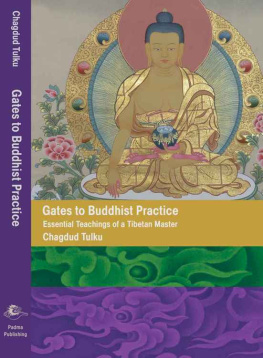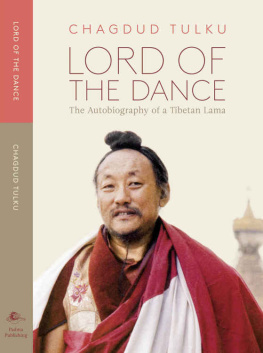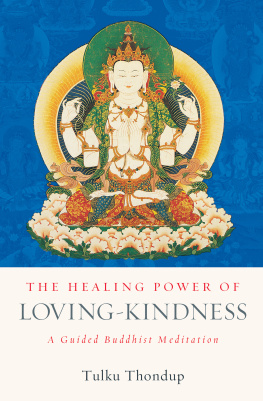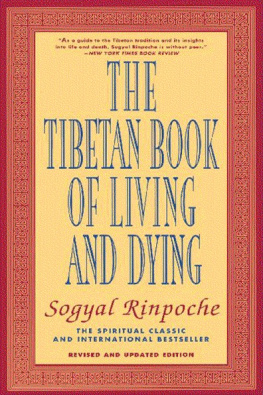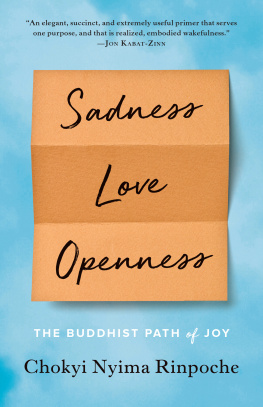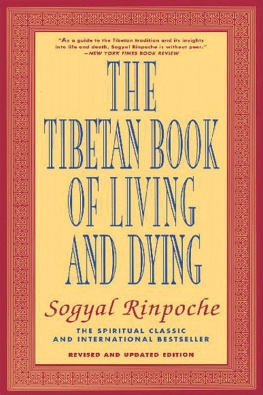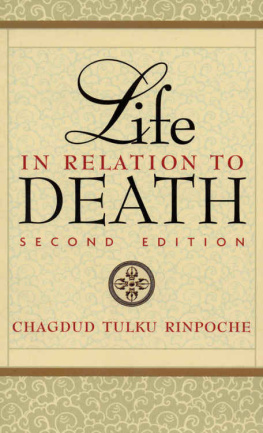GATES TO BUDDHIST PRACTICE

H.E. CHAGDUD TULKU RINPOCHE

Published by Padma Publishing
P.O. Box 279
Junction City, CA 96048-0279
www.tibetantreasures.com
Padma Publishing 1993
Revised Edition 2001
Reprinted 2006, 2012
E-book 2015
All rights reserved. No part of this book may be reproduced in any form or by any means, electronic or mechanical, including photocopy, recording, or any information storage or retrieval system without permission in writing from the publisher.
Printed in the United States of America
Library of Congress Cataloging-in-Publication Data
Chagdud Tulku Gates to Buddhist practice: essential teachings of a Tibetan master
/Chagdud Tulku.Rev. ed.p. cm. Includes index.
ISBN-13: 978-1-881847-40-3
1. Religious lifeBuddhism. 2. Buddhism
BQ5395.C43 2001294.3449dc21
00-52404
Contents
Editors Preface
Gates to Buddhist Practice, the first volume of The Living Dharma Series: Oral Teachings of Chagdud Tulku, presents traditional Tibetan Buddhist wisdom to Western readers in His Eminence Chagdud Tulku Rinpoches uniquely accessible style, interweaving stories from his native Tibet with a step-by-step exploration of the foundation and essence of Vajrayana Buddhism.
Son of Dawa Drolma, one of Tibets most renowned female lamas, Chagdud Rinpoche received extensive training from many great lamas and belongs to the last generation of teachers to have inherited the vast wealth of Tibetan Buddhist teachings and methods before the Chinese Communist consolidation of power in Tibet. In 1959, he was forced into exile and, during the two decades that followed, served the Tibetan community in India and Nepal as lama and physician. He also aided in refugee resettlement, as well as the artistic development of new monasteries.
Abbot of Chagdud Gonpa in Tibeta centuries-old monastery and one of the few to survive the Chinese Communist invasionRinpoche came to the United States in 1979. In 1983 he established Chagdud Gonpa Foundation, which has centers throughout the United States, South America, and Europe. Rinpoche now lives at Khadro Ling, in Trs Coroas, Brazil, Chagdud Gonpas main center in South America. His wisdom and compassion, which derive from a treasury of human experience, scholarly training, and profound meditative insight, permeate his presentation of the Buddhadharmaa presentation that, rich with metaphor, transcends cultural and religious barriers, and spirals through the extensive body of Buddhist teachings to their very heart.
Since Rinpoche came to the West, thousands of spiritual practitioners have gained insight into minds nature through his instruction on the Vajrayana. A master of the most profound teachings of the Buddhist path, the Great Perfection (Dzogchen), he is committed to making the full range of Vajrayana methods available to Western students. His teachings, imbued with the Great Perfection perspective and transmitted with warmth and humor, reveal to those who are receptive a glimpse of their intrinsic awareness.
Most of Rinpoches public talks have been tape-recorded. The Living Dharma Series consists of edited transcripts of those teachings. In Gates to Buddhist Practice, Rinpoche speaks of why we suffer and how we can eliminate the causes of suffering to create ultimate freedom for ourselves and others. He presents a multitude of methods for working with the mind in daily life; for reducing anger, attachment, ignorance, jealousy, and pride; for practicing effortful and effortless meditation; and for developing wisdom and compassion. Readers will find spiritual truths that are relevant to and of immediate benefit in their daily lives, truths that when applied with sincerity will produce unequivocal changes in their own minds and in their interactions with others. The book also contains an introduction to the Vajrayana, the lightning path, which can be pursued with a qualified teacher.
The teachings presented here serve as an introduction to Chagdud Rinpoches presentation of the Buddhadharma. Individual chapters are self-contained, yet the book proceeds through a progression of ideas, themes, and practices. The depth of these teachings will become increasingly apparent upon repeated readings, but more so through the application of the principles taught. Gates to Buddhist Practice is a book not only about the philosophy of the Buddhist religion, but also about Buddhist practice, the methods taught by the Buddha Shakyamuni 2,500 years ago that have produced profound transformation in the minds of those who have diligently applied them.
May this book be the cause of liberation for all who read it, and may all find freedom from the cycles of suffering and awaken to their minds true nature.
Editors Preface to the Revised Edition
Since its publication in 1993, Gates to Buddhist Practice has illuminated themes in Buddhist thought for new and experienced practitioners alike, and has provided instruction to people of all spiritual backgrounds. Until his passing in 2002, His Eminence Chagdud Tulku Rinpoche continued to teach in North and South America, and met with thousands of sincere, enthusiastic, and sometimes skeptical students. The questions inspired by these teachings form the basis of the material added to this revised edition. Rinpoche provides insight into formal meditation practice as well as the integration of spiritual methods into daily life. Thus new readers will receive the benefit of other students efforts to understand the teachings and clarify their practical concerns with an authentic lama.
In addition, the original index has been revised and a glossary compiled. Both will be helpful to new students and those familiar with the dharma, particularly those who intend to use this book as a reference or study guide.
Acknowledgments
It is because of His Eminence Chagdud Tulku Rinpoches tireless compassion, kindness, and commitment to the liberation of beings that these teachings have become available.
Great appreciation is due to the translators and interpreters of these teachings: Lama Chkyi Nyima (Richard Barron), who translated from the Tibetan, and Lama Tsering Everest, Lama Shenpen Drolma (Lisa Leghorn), and Chagdud Khadro (Jane Tromge), who interpreted Rinpoches new and unique English for Western audiences.
Gratitude is extended to Lama Tsultrim Palmo (Mary Racine), Kimberley Snow, and Barry Spacks, who worked tirelessly as a team with Lama Shenpen, series editor, to enable Gates to Buddhist Practice to emerge from the transcript pages, as well as to Gina Phelan, Anna Smith, and Linda Baer for their help in preparing this revised edition. Appreciation is due as well to all those who contributed invaluable help at various stages of the project.
PART I
Discovering the Path to Freedom
1
Turning the Wheel
Why do we need a spiritual path? We live in a busy age, our lives overflow with activitiessome joyous, some painful, some satisfying, some not. Why take time to do spiritual practice?
A story is often told about a man from the northern region of Tibet who decided to go on a pilgrimage with his friends to the Potala Palace, the Dalai Lamas home in Lhasa, a very holy place. It was the trip of a lifetime.
In those days, there were no cars or vehicles of any kind in that region, and people journeyed on foot or by horse. It took a long time to get anywhere, and it was dangerous to go very far, as many thieves and robbers preyed on unsuspecting travelers. For these reasons, most people stayed in their home area all their lives. Most had never seen a house; they lived in black tents woven from yak hair.
Next page
